Introduction
Product Overview
{{section_header}}{{section.name}}{{/section_header}}
Get to know the {{product.name}}.
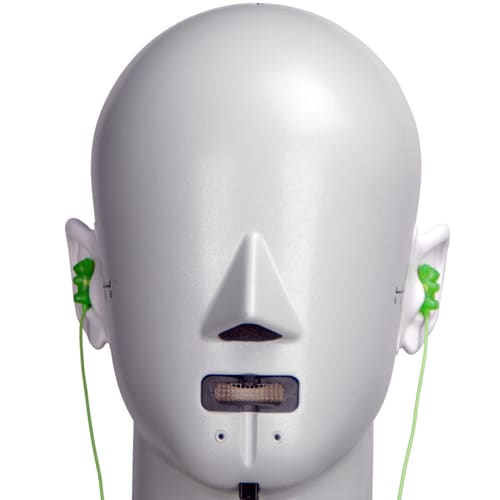
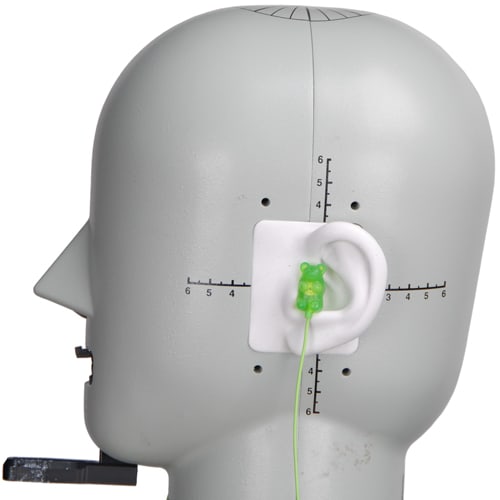
Speakers
{{section_header}}{{section.name}}{{/section_header}}
Here we see the speaker element, which is normally protected by a thin layer of porous mesh. This barrier is an effective prophylactic against ear wax and other bodily fluids entering the driver.
Back
{{section_header}}{{section.name}}{{/section_header}}
The back of the ear cups are fairly featureless, but that's part of the design. They have an interesting texture, and these {{product.model}} are rather large.
Band
{{section_header}}{{section.name}}{{/section_header}}
At the top of the ear cups, we see the band of the {{product.model}}s, which extends at the user's preference, and reveals an etched Fanny Wang logo on the metal bit.
Cable
{{section_header}}{{section.name}}{{/section_header}}
The cable of the {{product.model}}s is quite interesting. While there's nothing special about a 3.93 foot cable normally, this one has a remote and splitter jack, allowing you to share your device with someone special, or just by yourself if you so choose. As an added plus, the cable is detachable, which comes in handy a lot of the time. Even though sometimes it's a pain, we love having a detachable cable.
While the cable is interesting, the plug is not; it was designed for mobile use primarily, and is the usual 1/8th inch TRS plug.
The cord guards seem to be sufficiently sized to get the job done, but as they're made of a thin rubber, they might not do enough to protect your headphone's thin cable at its weak points.
Additional Features
{{section_header}}{{section.name}}{{/section_header}}
Pictured is the splitter that was mentioned earlier: it's the standard 1/8th inch jack.
In the Box
{{section_header}}{{section.name}}{{/section_header}}
In addition to your headphones, an airplane adapter, carrying case, detachable cable, and assorted documentation comes in the box.
Durability
{{section_header}}{{section.name}}{{/section_header}}
While these headphones are made of a collection of metal, plastic, and rubber, they don't appear to be exceptionally durable. The detachable cable is a plus, but make sure you handle these carefully. Broken headphones are no fun, and the overall construction of the cans seems a little chintzy.
Aesthetics
{{section_header}}{{section.name}}{{/section_header}}
The {{product.model}}s come in black, white, and blue casing, and generally channel the aesthetic of the Monster Beats Pros (but without the metal). They're moderately flashy, and will draw the occasional eye or two.
Frequency Response
{{section_header}}{{section.name}}{{/section_header}}
For the price you pay for the {{product.name}}s, you can do a lot better in terms of performance. While this isn't the first time we've seen a pair of noise-canceling headphones with a huge dip in the mid range, the {{product.model}}s have a wildly erratic frequency response. You'll definitely will notice a dip in volume of the upper third of a piano, or man of the higher notes of guitar. Additionally, bass sounds are quite prominent. Enabling the active noise cancelling improves the frequency response slightly, reducing the bass overemphasis and the upper harmonic underemphasis, but it also boosts the volume of high notes considerably to match the bass.

Leaving any noise canceling off, however, gives you a frequency response that is very erratic, and not very palatable in the high end, as seen below.
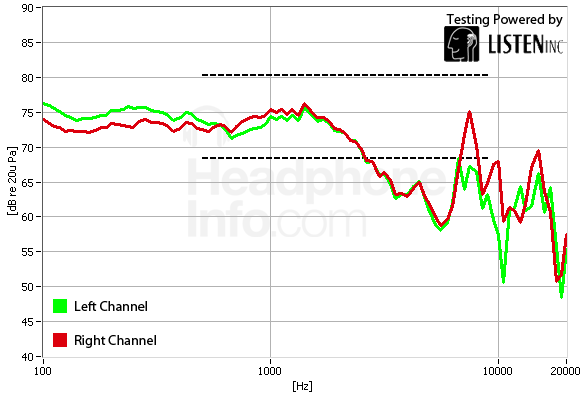
Click here for more information on our frequency response test.
Distortion
{{section_header}}{{section.name}}{{/section_header}}

Noise Cancellation On
While the {{product.name}} have a tiny bit of distortion without the noise canceling enabled, it gets worse when you flick the switch. Not pictured is the 2% level of distortion reached with the bass boost on. Below is the distortion level without noise canceling enabled.
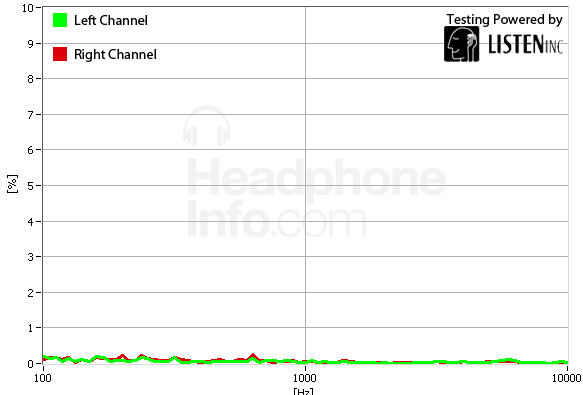
Click here for more information on our frequency response test.
Tracking
{{section_header}}{{section.name}}{{/section_header}}
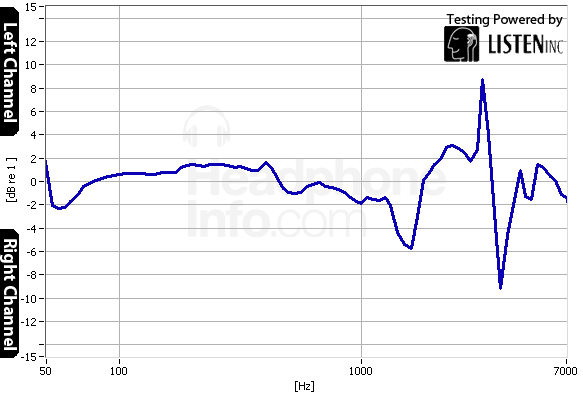
While there are several audible channel preference errors with the {{product.name}}, turning on the active noise cancellation will mitigate the worst of them. While the errors persist, they are far less audible than they are without the unit enabled, pictured below.
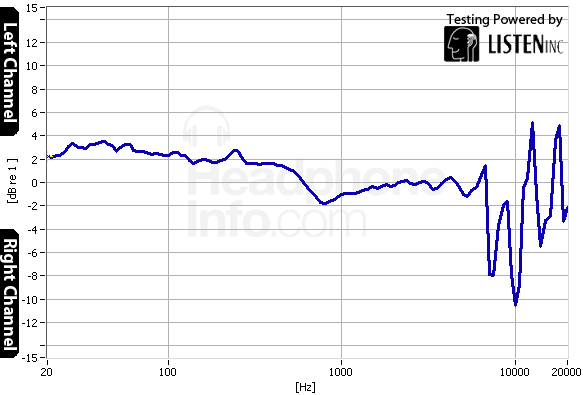
Click here for more information on our frequency response test.
Isolation
{{section_header}}{{section.name}}{{/section_header}}
If you're looking for a set of headphones to take with you on a plane, the {{product.name}}s are actually a good bet. While it's true that there are better active noise cancelers out there, the performance of this unit is good. As you can see in the graph, the {{product.model}}s block out between 15 and 35dB, which is enough to block out most small airplane engines enough to hear your music over.
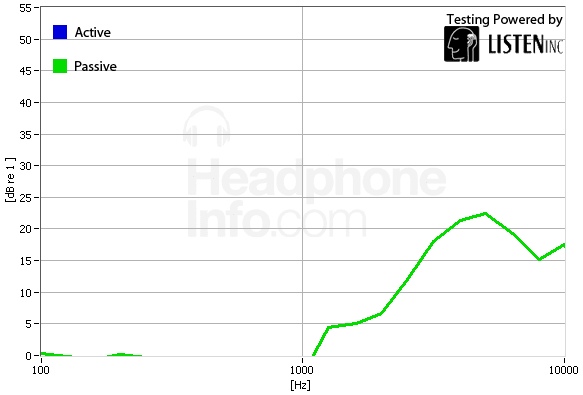
Click here for more information on our isolation test.
Leakage
{{section_header}}{{section.name}}{{/section_header}}
With the active canceling turned on, the {{product.name}}s leak out a little bit of sound, but not much; certainly not enough to bother people around you.
Click here for more information on our leakage test.
Maximum Usable Volume
{{section_header}}{{section.name}}{{/section_header}}
While it's true that you can potentially listen to your {{product.model}}s at a volume of 112.68dB before hitting the magic 3% threshold of distortion, this is another instance in which a bigger number is not better. If you bump your tunes at that volume for any extended period of time, you can seriously jeopardize your hearing.
Click here for more on our maximum usable volume test
Short-Term Use
{{section_header}}{{section.name}}{{/section_header}}
In the short term, these headphones are very comfortable on your head: they don't move around too much, they distribute their weight well, and they are fairly soft against your skull. Good marks here, although the band can dig into your scalp if you have a larger head.

Extended Use
{{section_header}}{{section.name}}{{/section_header}}
Over time, the {{product.model}} can get a little hot, so be sure to take breaks here and there if they get to be too uncomfortable.
Customizability
{{section_header}}{{section.name}}{{/section_header}}
While there's very little you can do to customize the look of the {{product.model}}, you can do a bit to customize the function of them. For example, the interchangeable nature of the cable allows you to replace it if you don't like it, and the airplane adapter allows you to use your cans to avoid paying for the in-flight movie. Beyond this, though, there really isn't much you can do with your {{product.model}}.
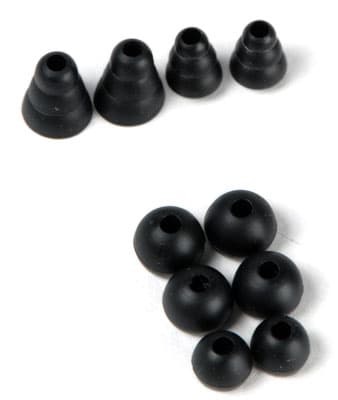
Cable Connectivity
{{section_header}}{{section.name}}{{/section_header}}
The cable included with the {{product.model}} is a standard-looking 3.93 foot cable with male-to-male 3.5mm TRS plugs. What isn't standard about it is the fact that it's punctuated by not only a remote, but splitter as well. Theoretically, you could daisy-chain these headphones from a single source provided the output was high enough.
Portability
{{section_header}}{{section.name}}{{/section_header}}
Over-ear headphones are generally not that portable, but the {{product.model}} come with a carrying case; a Fanny pack, if you will. This case comes with a mesh pouch on the inside to hold your accessories and/or cable.
Maintenance
{{section_header}}{{section.name}}{{/section_header}}
While you can remove the ear pads to clean them, the only other strength of the {{product.model}} maintenance-wise is the fact that you can replace a broken cable should you ever snap a solder point in the remote or break a plug. While it doesn't sound like a lot, that alone will add considerable life to your headphones.
Other Features
{{section_header}}{{section.name}}{{/section_header}}
Battery
Unfortunately, active noise canceling headphones often require a battery, and the {{product.model}} are no different. Using twin AAA batteries, the headphones managed to continue operation over 60 hours in the lab without needing a new pair, but we were unable to figure out their maximum battery life. While this is relatively good, it can get quite annoying and expensive if you listen to music for a good portion of your day.
Remote & Mic
Home to the microphone, volume control and operation button, the remote punctuates the stock cable of the {{product.model}}.
Volume Control
The volume controls reside on the remote, flanking each side of the operation button.
Active Noise Cancellation
Like many headphones with active noise cancellation (ANC), Fanny Wang made sure that their performance would be at their best when the ANC unit is enabled. However, they also added another feature, bass boost, along with the ANC that alters performance. We recommend against using it unless you absolutely need more bass in your music, because the performance drops off a bit by adding more distortion, and more erratic frequency response.
Design
{{section_header}}{{section.name}}{{/section_header}}
While both headphones are versatile cans with detachable cables and varying customization options, the LP 2s are significantly more durable, though at the cost of having no active noise canceling. Both come it at around the same price point, but in term of performance, the LP 2s are far more potent than the 3000 series cans.
Frequency Response
{{section_header}}{{section.name}}{{/section_header}}
While neither frequency response is very flat, that of the LP 2s conforms much closer to the ideal limits than do the 3000 series cans. While both overemphsize bass frequencies, the LP 2s do not have any underemphasis problems that are glaringly noticeable in comparison to those of the {{product.model}}.
Distortion
{{section_header}}{{section.name}}{{/section_header}}
The LP 2s don't have much of an issue with distortion, while the {{product.model}} have a small level of distortion.
Tracking
{{section_header}}{{section.name}}{{/section_header}}
Where the LP 2s don't have much in the way of audible channel preference error, the {{product.model}} have a few swings that stray in to the realm of audibility.
Isolation
{{section_header}}{{section.name}}{{/section_header}}
Here is where the {{product.model}} please: noise canceling. Blocking out 15+dB over the full range of frequencies is a significant drop in the level of noise reaching your ear, and is great for airplane or subway trips.
Comfort
{{section_header}}{{section.name}}{{/section_header}}
If you have the opportunity, we urge you to try on both sets of headphones for yourself, because the only way you'll ever know what works best for you is to see for yourself. Common complaints for the Fanny Wang cans included the band digging into your scalp, while the LP 2s often caught long hair in the band.
Verdict
{{section_header}}{{section.name}}{{/section_header}}
Each pair of headphones brings their advantages and disadvantages to the table, and these two are no different. If you like audio performance, customizability, and insane durability, the V-Moda LP 2s are the clear winner. If you're looking for noise canceling cans, you're better off putting the Fannys on your head.
Design
{{section_header}}{{section.name}}{{/section_header}}
While the PXC 450s weren't made to be flashy like the {{product.model}}, they do catch the eye a bit, and many of its features are geared towards ease of use (like rotating ear cups). Both are molded from plastic, but the PXC 450s feel like they could take a few drops without breaking.
Frequency Response
{{section_header}}{{section.name}}{{/section_header}}
While both frequency responses are somewhat erratic, the PXC 450s do a better job of sticking within our ideal limits, and not de-emphasizing mids as much as the {{product.model}} do.
Distortion
{{section_header}}{{section.name}}{{/section_header}}
While both sets of cans have a bit of distortion, the PXC 450s have less overall.
Tracking
{{section_header}}{{section.name}}{{/section_header}}
Neither set of headphones has what we'd term a "good" tracking response, as both have their imperfections.
Isolation
{{section_header}}{{section.name}}{{/section_header}}
Both sets of headphones cancel out about the same amount of noise, so you really can't go wrong here.
Comfort
{{section_header}}{{section.name}}{{/section_header}}
While both sets of on-ears are very comfortable, we can tell you that the PXC 450s are far more comfortable for those of you with a large noggin, as they distribute their weight over a much larger area, and have a longer band. If you have a smaller cranium, the {{product.model}} are less likely to move around.
Verdict
{{section_header}}{{section.name}}{{/section_header}}
While there is a gap in performance, the {{product.model}} offer a couple of things not normally covered by our comparisons. For example, their carrying case has less volume overall, and are therefore easier to take on airplanes if you have a carry-on. Still, the PXC 450s fit some heads better than the {{product.model}} do, and they offer a measurable performance bump.
Design
{{section_header}}{{section.name}}{{/section_header}}
While both the {{product.model}} and the QuietComfort 15s are both over-ear noise canceling headphones, their design is different in a number of ways, including, but not limited to: the Fanny Wangs' non-proprietary 1/8th inch jack, the {{product.model}}' need for two batteries, and their bigger size.
Frequency Response
{{section_header}}{{section.name}}{{/section_header}}
While neither has what we'd term a "good" frequency response, the Bose cans don't have the same underemphasis problems that you get with the {{product.model}}.
Distortion
{{section_header}}{{section.name}}{{/section_header}}
Both have a certain level of distortion, but the {{product.model}} have less.
Tracking
{{section_header}}{{section.name}}{{/section_header}}
While neither set of headphones has a perfect tracking response, the errors of the {{product.model}} are a little less noticeable overall (but only when noise canceling is enabled).
Isolation
{{section_header}}{{section.name}}{{/section_header}}
While the {{product.model}} are decent isolators, the Bose QuietComfort 15s are fantastic isolators, blocking out a stupendous amount of sound.
Comfort
{{section_header}}{{section.name}}{{/section_header}}
Because there is a decent weight difference between these cans, you're more likely to be more comfortable with the Bose headphones. Keep in mind, though, that all heads are different, and the only way to be sure is to actually try them on ahead of time.
Verdict
{{section_header}}{{section.name}}{{/section_header}}
It seems that the only measurable advantages the {{product.model}} have over the Bose QuietComfort 15s are aesthetics, and the fact that they leak a bit less sound. With a better audio performance, noise canceling, and a similar price point, the Bose cans are a decent option if you're looking for a good set of active cancelers for air travel.
Conclusion
{{section_header}}{{section.name}}{{/section_header}}
While the {{product.name}} don't do much to set themselves apart from the pack of stylish headphones performance-wise, they certainly look good. Still, what comes out of them is a little hard to swallow when you consider their price point, and for $300 you can certainly find better-performing headphones that will get you where you need to go.
That's not to say that they're all bad: their noise canceling unit blocks out a fair amount of sound, and this is perfect for air travel. The remote that lives on the stock cable allows decent control of your iPod, and the splitter on the cable allows you to share your tunes (or the in-flight movie) with those next to you, which is an interesting feature.
If you're looking for a set of cans that come in different colors, looks the part of a high-end set of headphones, and offers a fair level of noise canceling, the {{product.name}} might fit your needs. They don't quite perform up to their price point, but for the extra money you get a few interesting doodads on your cable, and a classy look.
Meet the tester
A seasoned writer and professional photographer, Chris reviews cameras, headphones, smartphones, laptops, and lenses. Educated in Political Science and Linguistics, Chris can often be found building a robot army, snowboarding, or getting ink.
Checking our work.
Our team is here to help you buy the best stuff and love what you own. Our writers, editors, and experts obsess over the products we cover to make sure you're confident and satisfied. Have a different opinion about something we recommend? Email us and we'll compare notes.
Shoot us an email